P1.1 Changes in Energy stores:
1 a When the ballsfall in the air,it speeds up as it
falls. The force of gravity acting on the object’s cause energy to be
transferred from its gravitational potential energy store to its kinetic energy
stores.
belectrical energy → heat toa heaterelement, some
heat → surroundings
2 aAny two from e.g., electric torch: chemical
energy stored in battery → electric· current transfers energy to lamp →
light or heat energy → surroundings, e.g., candle: energy from chemical
reactions when candle burns· → light or heat energy → surroundings
bi candle
iielectric torch
3 aThe changes in energy gravitational potential energy
stored in an electric train as it moves up a hill at constant speed.
bAs we know from our work on kinetic energy, the
faster an object ismoving,the more kinetic energy it has. To stop a train from
we need to apply a force to kinetic energy into other forms such a heat. This
is what brakes do-they apply a force in the opposite direction to the motion of
the train. This cause deceleration and eventually the train stops.
4 The electrical energy supplied tothe ovenused to
generate microwaves. Then microwaves make food particlesmovefaster so food
becomes hot.

P1.2 Conservation of energy:
1 a Brake pads become hot due to friction and energy
transferred from brake pads to surroundings as heat braking → sound energy →
surroundings
bKE → GPE in roller coaster → KE inairgoing up GPE →
KE going down
2 Descent: GPE → KE + heat to surroundings due to air
resistance impact: KE → elastic energy of trampoline + heat to surroundings due
to impact + sound ascent: elastic energy of trampoline → KE → GPE + heat to
surroundings due to air resistance
bLess
energy at top of a bounce than at the point of release
c Clamp meter ruler vertically over middle of a
trampoline, hold ball next to ruler with lowest point level with top of ruler,
release ball and observe highest level of bottom of ball after rebound, repeat
several times → average rebound position, repeat with same ball for other two
trampolines, highest rebound position → bounciest
3 Elastic energy of rubber straps → KE of capsule KE →
GPE ascapsule
KE → GPE ascapsule.
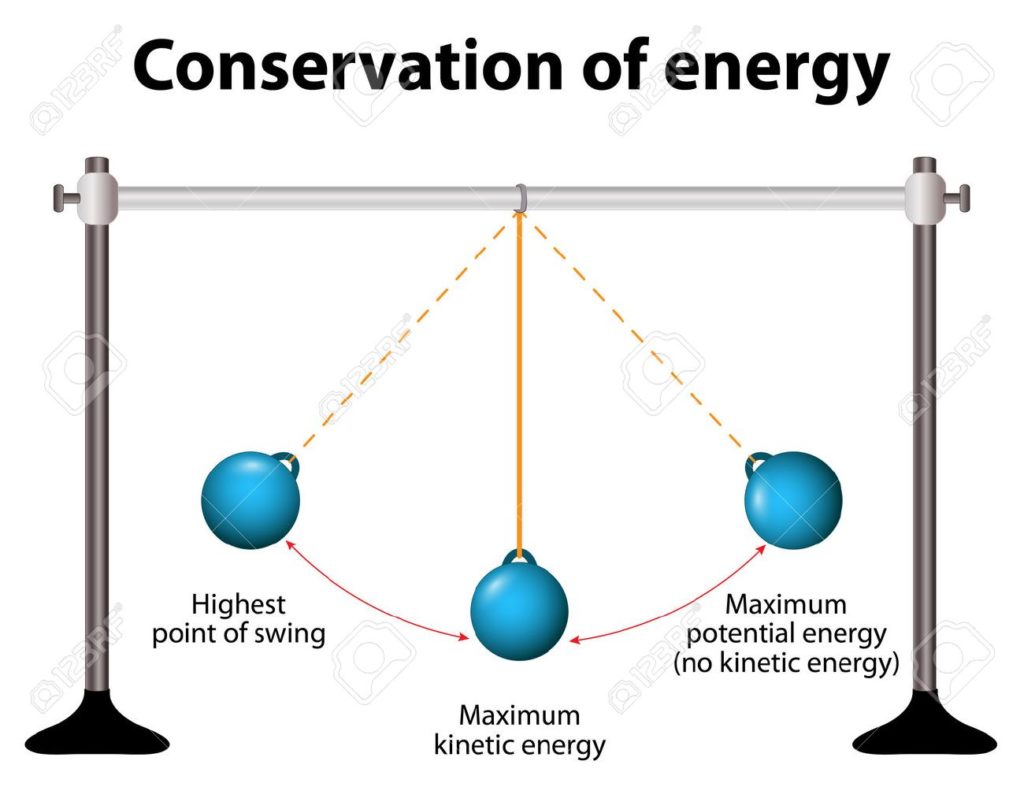
P1.3 Energy and work:
1 ai chemical energy stored in rower’s muscles → KE of
boat and water + heat to surroundings
iimotor KE → GPE of barrier + thermal energy from
friction and sound energy
b2000 N × 40 m = 80 000 J
2 KE of car → brake pads by friction between brake
pads and wheel discs so brake pads become warm
b7000 N × 20 m = 140 000 J.
3ai20 N × 4.8 m = 96 J
ii80 N × 1.2 m = 96 J
b1400 J/ 7.0 m = 200 N
4 a 25 N × 12 m = 300 J
bChemical energy stored in student’s muscles → KEin
box, when box moving KE + GPE oftheboxdoes not
change,thefrictionalforcebetweenboxand floor transfers energy by heating from
box to floor
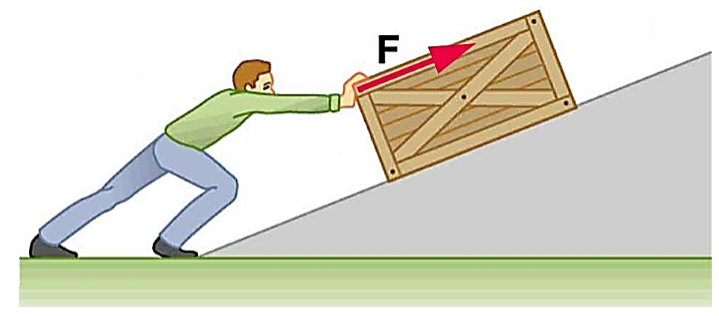
P1.4 Gravitational potential energy stores:
1 a descent:GPEof ball transferred by force of gravity →
KE of ball, + KE of air pushed aside by ball moving, impact: KE of ball →
elastic energy of ball + some elastic energy → KE as it rebounds, after impact:
KE of ball → GPE of ball as it rises → KE of air pushed aside by ball as it
moves through the air.
bimg = 1.4 N EP = 1.4 N × (2.5 m – 1.7 m) = 1.1 J
iiEnergy → surroundings due to air resistance asball
moves
through air,
energy transfer due to heating of ball when it is deformed.
energy → surroundings
by sound waves whenballhitsfloor.
2 a 450 N × 0.20 m = 90 J
b50 × 90 J = 4500 J
3 25 kg × 10 N/kg × 1.8 m = 450 J
bBall falls 1.8 m – 0.3 m = 1.5 m EP =mgh= 25 kg × 10
N/kg × 1.5 m = 375 J
4 Energy supplied by blood system to biceps to keep
muscle contracted, no work done onobjectas it doesn’t move, energy supplied
heats muscles → heat to surroundings
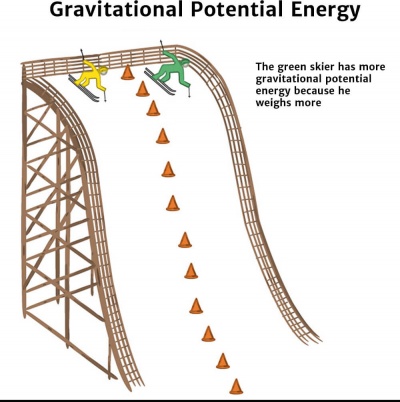
P1.5 Kinetic energy and elastic energy stores:
1 a i) 0.5 × 500 kg × = 36 000 J
ii) 0.5 × 0.44 kg × = 88 J
1 b EK = 1 /2 = 2
× 36 000 J so 1 2 × 500 kg × v 2 = 72 000 J
∴ = 72 000 J/ 0.5 × 500 kg
= 288 /∴ v = 17 m/s
2 i) work done by muscles transfer chemical energy from
muscles → elastic PE of catapult
ii) Elastic PE of catapult → KE of object
b2.0 N × 5.0 m = 10 J 1
iimass = weight/ g = 2.0 N /10 N/kg = 0.20 kg
assume all elastic
energy → KE in object, = 1 /2 = 10 J
so 1/ 2 × 0.20 kg
× = 10 J
∴ = 10 J /0.5 × 0.20 kg
= 100 /
∴ v = 10 m/s
3 a work done by brakes = energy transferred from
kinetic store = 360 000 J
using W = Fs → 360 000 J = F × 100 m
∴ F = 360 000 J/ 100 m = 3600 N
b1/ 2 × m × = 360 000 J
∴ 0.5 × m × 900 = 360 000 J
rearranging → m = 360
000 J/ 0.5 × 900 m2 /s2 = 800 kg
4 Elastic energy = 1 /2 = 0.5 × 250
N/m × (0.21 m)2 = 5.5 J

P1.6 Energy dissipation:
1 a Wasted: sound, KE of air
bUseful: light and sound, wasted: heat
cUseful: boils water, wasted: heat lost through
surfaces, sound
dUseful: sound, wasted: heat loss
2 Gear box would heat up due to energy transfer
through friction between the gears, the hotter the gear box, the less efficient
the gears, if gear box becomes very hot, stops working as oil in it burns up
and gear wheels wear away
b Inside of shoes heat up due to energy transfer (by
conduction + infrared radiation) from feet which rub, feet transfer less energy
as shoes warm up so feet and athlete become hotter
C Drill heats up due to friction between rotating
drill and wood, if drill becomes very hot, it burns wood creating smoke
d Discs heat up due to
energy transfer by friction between discs and brake pads, KE of car decreases
3 a As pendulum swings towards middle GPE decreases and
KE increases, as it moves from middle to highest positionitsKE → GPE, air
resistance causes some KE → heat to surroundings
bAs air resistance opposes motion KE from pendulum
→air,until pendulum stops moving and has no KE, energy transferred to air
dissipated to surroundings
4 Friction at wheel axles and air resistance reduces
KE of cyclist and KE → heat to surroundings,soundmight also be created and →
energy to surroundings.
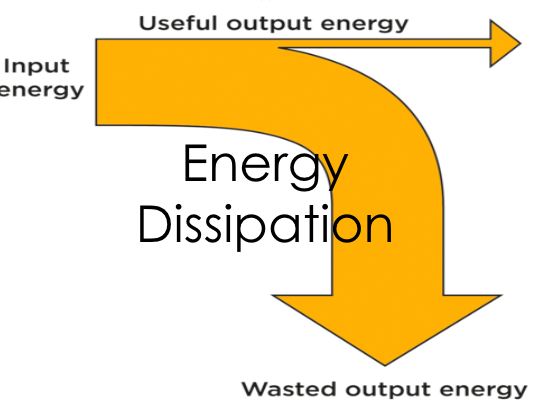
P1.7 Energy and efficiency:
a.Useful energy <
energy supplied
iEfficiency = useful energy delivered input energy
supplied a machine never > 100% efficient because useful energy delivered
never > total energy supplied
iiUseful energy always < total energy supplied, due
to electric currents in circuit wires/components and friction between moving
parts,energy dissipated by transferring heat to surroundings
a60 J − 24 J = 36 J
b24 J/ 60 J (× 100) = 0.40 (or 40%)
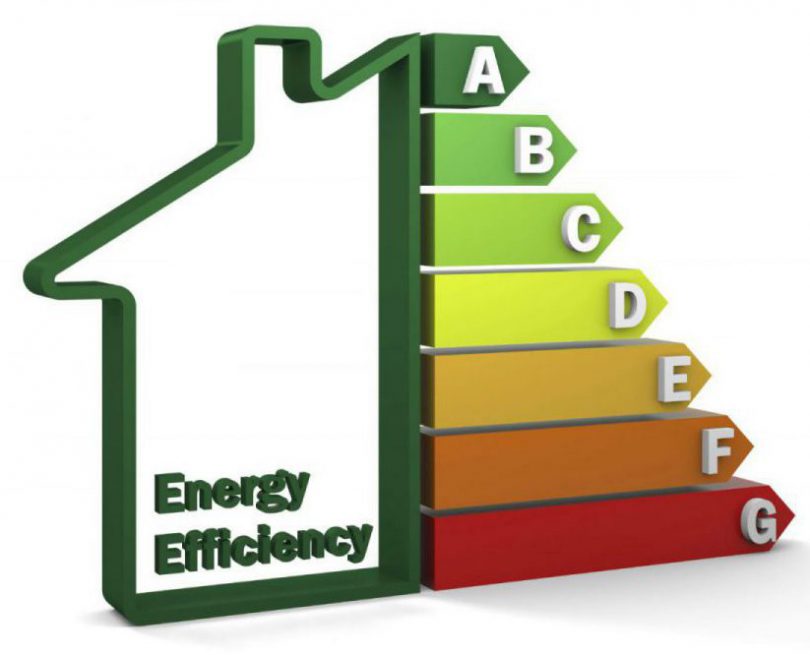
P1.8 Electrical appliances:
aWD winding clockwork spring up to store energy in
spring
bSpring drives small electric generator in radio,
energy → from spring to generator by force of spring when spring unwinds,
current from generator → energy to radio circuits
cAdvantage: no replacement
batteries needed
disadvantage: spring needs to be rewound after unwinding.
aAny one from heat water
spray it and pump it
out
a 80% × 60% = 48%
b (100% − 48%) = 52%

P1.9 Energy and power:
iMains filament bulb
ii10 000 W electric cooker
b2 million × 3 kW = 6 million kW
2 a 5000 W × 20 s = 100 000 J
b12 000 J (× 100) 100 000 J = 0.12 (or 12%)
3 a 1500 kJ 50 s = 30 kW
b30 kW /100 kW = 0.30 (or 30%)
4 a Current through heater → energy to heater raising
temperature of water, pump → energy to water to keep water moving enabling
water to overcome resistive forces due to pipes, energy → to surroundings by
sound waves frompump
b12 000 W × 4800 s = 960 000 J
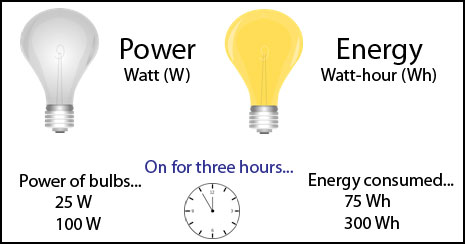
Summary questions:
1 energy transferred by electric current to heater and
motor in heater,increasesstore of thermal energy so becomes hot in fan motor,
transferred to air as kinetic energy air warmed by heater heats objects and
material it comes into contact with heater warms fan heater case and vibrating
parts of heater create sound waves
benergy transferred where wanted in way wanted in fan
heater, transferred by current to heater transferred heat air creating
convection currents and keeping motor turning to make air move
iienergy transferred that is not useful in fan heater,
kinetic energy from vibrations of motor transferred as sound waves and by
heating fan heater case
2 a loses gravitational potential energy and gains
kinetic energy some energy lost due to air resistance
iiloses more gravitational potential energy and all
kinetic energy
energy lost mostly
transferred as elastic energy intorope
some energy may be lost
due to air resistance
bmaximum kinetic energy when rope taut
if 100% efficiency,
maximum kinetic energy = 12 000 J
3 a i7000 kW × 300 s = 210 MJ
ii23 m/s × 300 s = 6900 m
iii210 000 000/6900= 30 435
≈ 30 000 N
iva =
zero so resultant force = zero
as driving force and
resistive force must be equal and opposite in
direction
btrain gains gravitational potential energy as it
travels upan incline
rate it transfers
energy to surroundings unchanged as speed same and
resistive forces
unchanged
so output engine power
needs to be greater as energy must be
transferred to train as
gravitational potential energy as well as to
surroundings
4 amg = 150 N
EP = 150 N × 1.2 m = 180 J
bW =
11 N × 20 m
= 220 J
ctrolley did not gain kinetic energy as speed constant
trolley gained 180 J
gravitational potential energy which is 40 J < work
done by student
resistive forces such
as friction at trolley wheels → 40 J to surroundings
as waste energy
5 aenergy initially stored inthestretchedcord as
elastic potential energy →
arrow as kinetic energy
when cord released
as arrow gainsheight,
its kinetic energy decreases and gravitational
potential energy
increases
atmaximumheight, arrow
has maximum gravitational potential energy
and minimum kinetic energy
as it travels
throughair, some energy transferred to air due to air
resistance
b I 0.5 × 0.015 kg × (25 m/s)2
= 4.7 J
ii0.015 kg × 10 N/kg × 20 m
= 3.0 J
iii4.7 J − 3.0 J
= 1.7 J
EK = ½mv2 = 1.7 J so ½ × 0.015 kg
× v2 = 1.7 J
v2 = 1.7 ��
0.5 × 0.015 kg = 227
m2/s2
v = 15 m/s
6 a EK
= 0.5 × 75 kg × (60 m/s)2
= 135 kJ
bi0.5 × 75 kg × (5 m/s)2
= 940 J
ii a 75 kg × 10 N/kg × 900 m
= 675 kJ
cW =
(GPE + KE) at start – KE after = 675 kJ + 135 kJ − 940 J
= 809 kJ
7 a imgh =
500 N × 3.0 m
= 1500 J
iienergy supplied = 600 W × 25 s = 15 000 J
energy wasted = 15 000
J − 1500 J = 13 500 J
b1500 J/15 000 J
= 10%
Practice questions:
01.1 5 096 joules
01.2 friction between runner’s shoeand ground
Or air resistance
02.1 20.25 minutes
22.75 minutes
18.5 minutes
02.2 to ensure measurements arerepeatable
02.3 to allow a comparison to bemade
02.4 to avoid bias in the results
02.5 shaver C
02.6 18.3 W
03.1 23 275 joules
03.2 2328 W
03.3 0.65 or 65%
03.4 Heat between surfacesdissipated into air
04.1 as the height increases the GPE
Increases they are
directly proportional
04.2 8800 joules
04.3 89 m/s
05.1 1152 joules
05.2 to ensure the springs return to original length
after bounce
05.3 for safety reasons in case they snap.
References:
BBC Bitesize
AQA GCSE Science Kerboodle textbook
Wikipedia
Wikimedia Commons
P1.1 Changes in Energy stores:
1 a When the ballsfall in the air,it speeds up as it
falls. The force of gravity acting on the object’s cause energy to be
transferred from its gravitational potential energy store to its kinetic energy
stores.
belectrical energy → heat toa heaterelement, some
heat → surroundings
2 aAny two from e.g., electric torch: chemical
energy stored in battery → electric· current transfers energy to lamp →
light or heat energy → surroundings, e.g., candle: energy from chemical
reactions when candle burns· → light or heat energy → surroundings
bi candle
iielectric torch
3 aThe changes in energy gravitational potential energy
stored in an electric train as it moves up a hill at constant speed.
bAs we know from our work on kinetic energy, the
faster an object ismoving,the more kinetic energy it has. To stop a train from
we need to apply a force to kinetic energy into other forms such a heat. This
is what brakes do-they apply a force in the opposite direction to the motion of
the train. This cause deceleration and eventually the train stops.
4 The electrical energy supplied tothe ovenused to
generate microwaves. Then microwaves make food particlesmovefaster so food
becomes hot.

P1.2 Conservation of energy:
1 a Brake pads become hot due to friction and energy
transferred from brake pads to surroundings as heat braking → sound energy →
surroundings
bKE → GPE in roller coaster → KE inairgoing up GPE →
KE going down
2 Descent: GPE → KE + heat to surroundings due to air
resistance impact: KE → elastic energy of trampoline + heat to surroundings due
to impact + sound ascent: elastic energy of trampoline → KE → GPE + heat to
surroundings due to air resistance
bLess
energy at top of a bounce than at the point of release
c Clamp meter ruler vertically over middle of a
trampoline, hold ball next to ruler with lowest point level with top of ruler,
release ball and observe highest level of bottom of ball after rebound, repeat
several times → average rebound position, repeat with same ball for other two
trampolines, highest rebound position → bounciest
3 Elastic energy of rubber straps → KE of capsule KE →
GPE ascapsule
KE → GPE ascapsule.

P1.3 Energy and work:
1 ai chemical energy stored in rower’s muscles → KE of
boat and water + heat to surroundings
iimotor KE → GPE of barrier + thermal energy from
friction and sound energy
b2000 N × 40 m = 80 000 J
2 KE of car → brake pads by friction between brake
pads and wheel discs so brake pads become warm
b7000 N × 20 m = 140 000 J.
3ai20 N × 4.8 m = 96 J
ii80 N × 1.2 m = 96 J
b1400 J/ 7.0 m = 200 N
4 a 25 N × 12 m = 300 J
bChemical energy stored in student’s muscles → KEin
box, when box moving KE + GPE oftheboxdoes not
change,thefrictionalforcebetweenboxand floor transfers energy by heating from
box to floor

P1.4 Gravitational potential energy stores:
1 a descent:GPEof ball transferred by force of gravity →
KE of ball, + KE of air pushed aside by ball moving, impact: KE of ball →
elastic energy of ball + some elastic energy → KE as it rebounds, after impact:
KE of ball → GPE of ball as it rises → KE of air pushed aside by ball as it
moves through the air.
bimg = 1.4 N EP = 1.4 N × (2.5 m – 1.7 m) = 1.1 J
iiEnergy → surroundings due to air resistance asball
moves
through air,
energy transfer due to heating of ball when it is deformed.
energy → surroundings
by sound waves whenballhitsfloor.
2 a 450 N × 0.20 m = 90 J
b50 × 90 J = 4500 J
3 25 kg × 10 N/kg × 1.8 m = 450 J
bBall falls 1.8 m – 0.3 m = 1.5 m EP =mgh= 25 kg × 10
N/kg × 1.5 m = 375 J
4 Energy supplied by blood system to biceps to keep
muscle contracted, no work done onobjectas it doesn’t move, energy supplied
heats muscles → heat to surroundings

P1.5 Kinetic energy and elastic energy stores:
1 a i) 0.5 × 500 kg × = 36 000 J
ii) 0.5 × 0.44 kg × = 88 J
1 b EK = 1 /2 = 2
× 36 000 J so 1 2 × 500 kg × v 2 = 72 000 J
∴ = 72 000 J/ 0.5 × 500 kg
= 288 /∴ v = 17 m/s
2 i) work done by muscles transfer chemical energy from
muscles → elastic PE of catapult
ii) Elastic PE of catapult → KE of object
b2.0 N × 5.0 m = 10 J 1
iimass = weight/ g = 2.0 N /10 N/kg = 0.20 kg
assume all elastic
energy → KE in object, = 1 /2 = 10 J
so 1/ 2 × 0.20 kg
× = 10 J
∴ = 10 J /0.5 × 0.20 kg
= 100 /
∴ v = 10 m/s
3 a work done by brakes = energy transferred from
kinetic store = 360 000 J
using W = Fs → 360 000 J = F × 100 m
∴ F = 360 000 J/ 100 m = 3600 N
b1/ 2 × m × = 360 000 J
∴ 0.5 × m × 900 = 360 000 J
rearranging → m = 360
000 J/ 0.5 × 900 m2 /s2 = 800 kg
4 Elastic energy = 1 /2 = 0.5 × 250
N/m × (0.21 m)2 = 5.5 J

P1.6 Energy dissipation:
1 a Wasted: sound, KE of air
bUseful: light and sound, wasted: heat
cUseful: boils water, wasted: heat lost through
surfaces, sound
dUseful: sound, wasted: heat loss
2 Gear box would heat up due to energy transfer
through friction between the gears, the hotter the gear box, the less efficient
the gears, if gear box becomes very hot, stops working as oil in it burns up
and gear wheels wear away
b Inside of shoes heat up due to energy transfer (by
conduction + infrared radiation) from feet which rub, feet transfer less energy
as shoes warm up so feet and athlete become hotter
C Drill heats up due to friction between rotating
drill and wood, if drill becomes very hot, it burns wood creating smoke
d Discs heat up due to
energy transfer by friction between discs and brake pads, KE of car decreases
3 a As pendulum swings towards middle GPE decreases and
KE increases, as it moves from middle to highest positionitsKE → GPE, air
resistance causes some KE → heat to surroundings
bAs air resistance opposes motion KE from pendulum
→air,until pendulum stops moving and has no KE, energy transferred to air
dissipated to surroundings
4 Friction at wheel axles and air resistance reduces
KE of cyclist and KE → heat to surroundings,soundmight also be created and →
energy to surroundings.

P1.7 Energy and efficiency:
a.Useful energy <
energy supplied
iEfficiency = useful energy delivered input energy
supplied a machine never > 100% efficient because useful energy delivered
never > total energy supplied
iiUseful energy always < total energy supplied, due
to electric currents in circuit wires/components and friction between moving
parts,energy dissipated by transferring heat to surroundings
a60 J − 24 J = 36 J
b24 J/ 60 J (× 100) = 0.40 (or 40%)

P1.8 Electrical appliances:
aWD winding clockwork spring up to store energy in
spring
bSpring drives small electric generator in radio,
energy → from spring to generator by force of spring when spring unwinds,
current from generator → energy to radio circuits
cAdvantage: no replacement
batteries needed
disadvantage: spring needs to be rewound after unwinding.
aAny one from heat water
spray it and pump it
out
a 80% × 60% = 48%
b (100% − 48%) = 52%

P1.9 Energy and power:
iMains filament bulb
ii10 000 W electric cooker
b2 million × 3 kW = 6 million kW
2 a 5000 W × 20 s = 100 000 J
b12 000 J (× 100) 100 000 J = 0.12 (or 12%)
3 a 1500 kJ 50 s = 30 kW
b30 kW /100 kW = 0.30 (or 30%)
4 a Current through heater → energy to heater raising
temperature of water, pump → energy to water to keep water moving enabling
water to overcome resistive forces due to pipes, energy → to surroundings by
sound waves frompump
b12 000 W × 4800 s = 960 000 J

Summary questions:
1 energy transferred by electric current to heater and
motor in heater,increasesstore of thermal energy so becomes hot in fan motor,
transferred to air as kinetic energy air warmed by heater heats objects and
material it comes into contact with heater warms fan heater case and vibrating
parts of heater create sound waves
benergy transferred where wanted in way wanted in fan
heater, transferred by current to heater transferred heat air creating
convection currents and keeping motor turning to make air move
iienergy transferred that is not useful in fan heater,
kinetic energy from vibrations of motor transferred as sound waves and by
heating fan heater case
2 a loses gravitational potential energy and gains
kinetic energy some energy lost due to air resistance
iiloses more gravitational potential energy and all
kinetic energy
energy lost mostly
transferred as elastic energy intorope
some energy may be lost
due to air resistance
bmaximum kinetic energy when rope taut
if 100% efficiency,
maximum kinetic energy = 12 000 J
3 a i7000 kW × 300 s = 210 MJ
ii23 m/s × 300 s = 6900 m
iii210 000 000/6900= 30 435
≈ 30 000 N
iva =
zero so resultant force = zero
as driving force and
resistive force must be equal and opposite in
direction
btrain gains gravitational potential energy as it
travels upan incline
rate it transfers
energy to surroundings unchanged as speed same and
resistive forces
unchanged
so output engine power
needs to be greater as energy must be
transferred to train as
gravitational potential energy as well as to
surroundings
4 amg = 150 N
EP = 150 N × 1.2 m = 180 J
bW =
11 N × 20 m
= 220 J
ctrolley did not gain kinetic energy as speed constant
trolley gained 180 J
gravitational potential energy which is 40 J < work
done by student
resistive forces such
as friction at trolley wheels → 40 J to surroundings
as waste energy
5 aenergy initially stored inthestretchedcord as
elastic potential energy →
arrow as kinetic energy
when cord released
as arrow gainsheight,
its kinetic energy decreases and gravitational
potential energy
increases
atmaximumheight, arrow
has maximum gravitational potential energy
and minimum kinetic energy
as it travels
throughair, some energy transferred to air due to air
resistance
b I 0.5 × 0.015 kg × (25 m/s)2
= 4.7 J
ii0.015 kg × 10 N/kg × 20 m
= 3.0 J
iii4.7 J − 3.0 J
= 1.7 J
EK = ½mv2 = 1.7 J so ½ × 0.015 kg
× v2 = 1.7 J
v2 = 1.7 ��
0.5 × 0.015 kg = 227
m2/s2
v = 15 m/s
6 a EK
= 0.5 × 75 kg × (60 m/s)2
= 135 kJ
bi0.5 × 75 kg × (5 m/s)2
= 940 J
ii a 75 kg × 10 N/kg × 900 m
= 675 kJ
cW =
(GPE + KE) at start – KE after = 675 kJ + 135 kJ − 940 J
= 809 kJ
7 a imgh =
500 N × 3.0 m
= 1500 J
iienergy supplied = 600 W × 25 s = 15 000 J
energy wasted = 15 000
J − 1500 J = 13 500 J
b1500 J/15 000 J
= 10%
Practice questions:
01.1 5 096 joules
01.2 friction between runner’s shoeand ground
Or air resistance
02.1 20.25 minutes
22.75 minutes
18.5 minutes
02.2 to ensure measurements arerepeatable
02.3 to allow a comparison to bemade
02.4 to avoid bias in the results
02.5 shaver C
02.6 18.3 W
03.1 23 275 joules
03.2 2328 W
03.3 0.65 or 65%
03.4 Heat between surfacesdissipated into air
04.1 as the height increases the GPE
Increases they are
directly proportional
04.2 8800 joules
04.3 89 m/s
05.1 1152 joules
05.2 to ensure the springs return to original length
after bounce
05.3 for safety reasons in case they snap.
References:
BBC Bitesize
AQA GCSE Science Kerboodle textbook
Wikipedia
Wikimedia Commons
